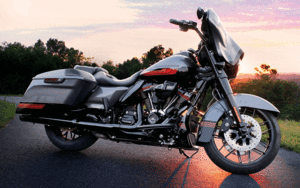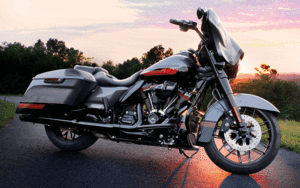How to Choose Motorcycle Insurance
A thrill-seeker's adventure and a practical mode of transportation, motorcycles can be your hobby or part of your daily routine. While you're cruising along the roads on your motorcycle, it's essential to have protection for yourself and others.
Like you would have car insurance for your vehicle, you need to get motorcycle insurance for your bike. You want to ride with confidence, and having the right motorcycle insurance can help you feel self-assured while you're exploring the open road.
As you would compare car insurance policies, it's best to do the same with motorcycle insurance policies. Follow this guide on choosing a motorcycle insurance policy.
Motorcycle Insurance: Legal Requirements
States require motorcycle insurance because policies can help cover the costs of accidents or injuries for the driver and others involved. Almost every state in the U.S. requires motorcycle riders to purchase motorcycle insurance. Florida is the only state that does not require riders to have a policy, but it's a smart idea to invest in coverage even if your state's laws don't mandate it.
Riders should understand the importance of motorcycle insurance. Carrying motorcycle insurance can prevent you from facing penalties, fees and other legal consequences.
Driving a motorcycle with insurance can prevent the following from happening:
- Fines and tickets
- Traffic school
- Points on driver's license
- Suspension of driver's license
- Arrest or probation
Even when you are a safe rider, you'll still appreciate the peace of mind that motorcycle insurance carries in situations where you encounter law enforcement or in case an accident occurs.
Check your state's motorcycle policy requirements for the minimum requirements for liability insurance.
Motorcycle Insurance Coverage
After you understand your state's insurance requirements and start comparing policies, it's essential to know what motorcycle insurance policies should include. You want to make sure you're following the law and protecting yourself as much as you can with your insurance coverage.
The standard motorcycle insurance should include two types of liability insurance — coverage for bodily injury and property damage. This coverage will help pay for the cost of damages that you as the rider cause to a third party in damages or injuries.
Motorcycle Liability Insurance
If you're in a collision, the other person will usually take your insurance information and file a liability claim with your insurance company. Motorcycle liability insurance does not cover you in case of bodily injury or damages to your bike, which is why people call motorcycle liability insurance third-party insurance.
Insurance companies will pay a set amount — the policy limit — for property damage or bodily injury. Policy limits vary between states. They include the claim limit per injured person, per accident and per third-party property damage.
Passenger Liability Insurance Coverage
One significant difference between motorcycle insurance and most car insurance policies is that you'll need to add extra coverage that protects passengers who ride on your motorcycle. This coverage is passenger liability coverage and covers bodily injury costs of a second rider on your bike.
Some states require motorcycle insurance to include guest passenger liability. Check your state's laws to see if you need to add this coverage. Even if not, you may still want to include it in your insurance policy, especially if you frequently have passengers on your bike.
Other Coverage Options
Similar to car insurance, you can include multiple types of coverage options for your motorcycle insurance. Other than liability insurance, most insurance companies offer these types of coverage options.
- Personal injury protection: This coverage can cover your medical bills for bodily injuries from an accident.
- Collision: This coverage can cover the cost of damages to your motorcycle minus your deductible.
- Comprehensive: Helps offset the costs if someone steals your motorbike or something other than a collision damages it, like animals.
As you research different insurance companies, do your homework on the various coverage add-ons they offer for motorcycle insurance policies. You can find extras like roadside assistance, trip interruption coverage, coverage for customer bike parts or equipment and transport trailer coverage.
Motorcycle Insurance Deductibles
When you purchase any insurance, you'll likely need to pay a deductible. An insurance deductible is a set amount you pay before the insurance policy officially starts. The payment is the money you agree to pay for repairs or damages and goes toward the claim amount in your policy.
You can choose to have a higher deductible so you can pay less money upfront, but you might pay more out of pocket in an accident.
Motorcycle Insurance Discounts
Insurance companies offer driver discounts for various reasons. Here are ways you can receive a discount from your insurance company:
- Bundle other policies with your provider, like homeowner or car insurance.
- Keep a clean driving record.
- Complete a motorcycle safety course.
- Join a motorcycle riders group or organization.
- Install an alarm on the bike.
- Store your motorcycle in a secured garage.
It's helpful to you as the rider to ask the insurance companies about the discounts they offer to keep your expenses down. Also, ask if they provide lay-up periods for motorcycle insurance. Lay-up periods offer discounts to riders who store their motorcycles away during the winter months.
Recommended Motorcycle Insurance Coverage
You're likely familiar with major national insurance companies that sell auto insurance. Many of these companies also offer motorcycle insurance or provide it as an endorsement to your car insurance.
You can check out these providers when you are choosing motorcycle insurance:
- AAA
- Allstate
- American Family
- Geico
- Liberty Mutual
- Nationwide Insurance
- Progressive
- State Farm
- USAA
Motorcycle insurance can vary between states. Reach out to local insurance agents to receive quotes for motorcycle insurance so you can compare rates and find the best solution for you.
Keep Your Motorcycle in Top-Performing Condition for Safe Rides
To ride as safely as possible, it's paramount to have your bike operating in peak condition. Scheduling routine maintenance on your bike is crucial to keep your bike running, so you can enjoy it longer.
If you're looking for hardworking technicians to perform maintenance on your Harley-Davidson motorcycle, check out Fat Head Cycles.
At Fat Head Cycles, we offer Harley-Davidson bike repairs, maintenance, products and customizations. Our fully equipped shop provides an extensive range of customer service for you and your Harley-Davidson motorcycle.
If you have any questions about our products or services, contact us through our online form or call us to learn more.
Also in Harley-Davidson News





Chris Rutter
Author